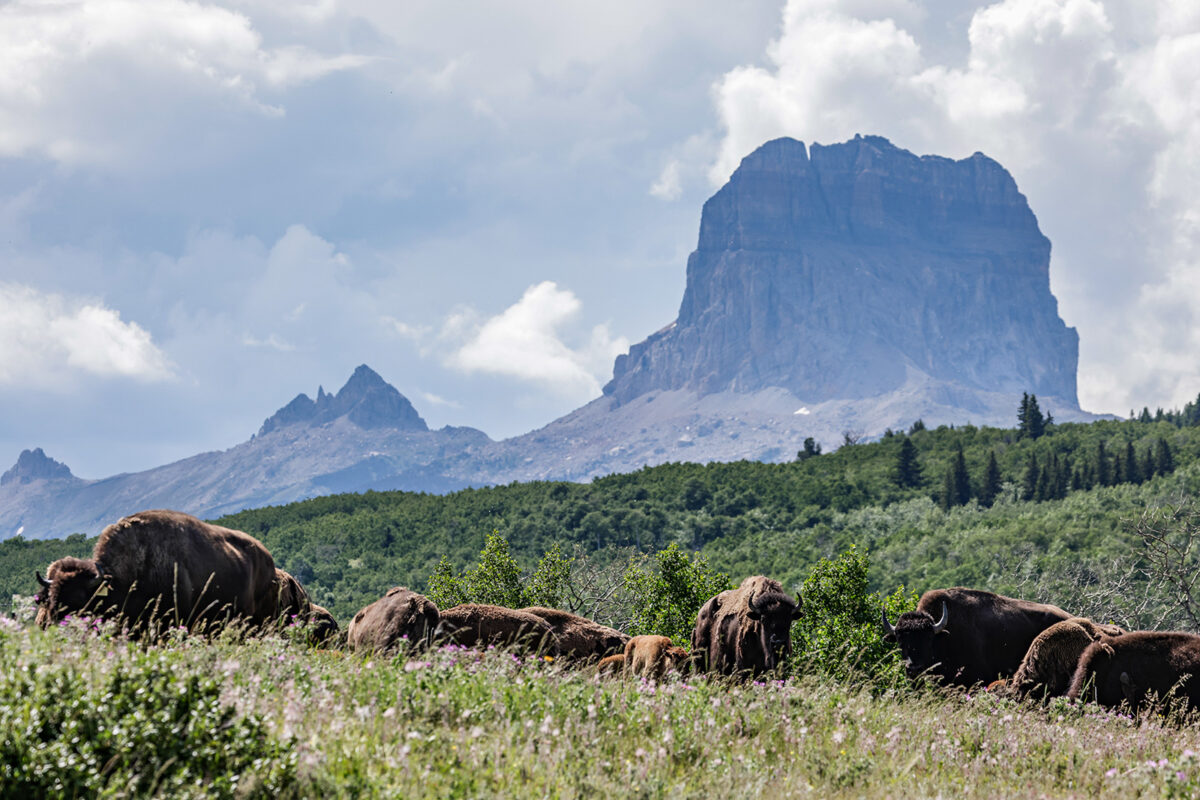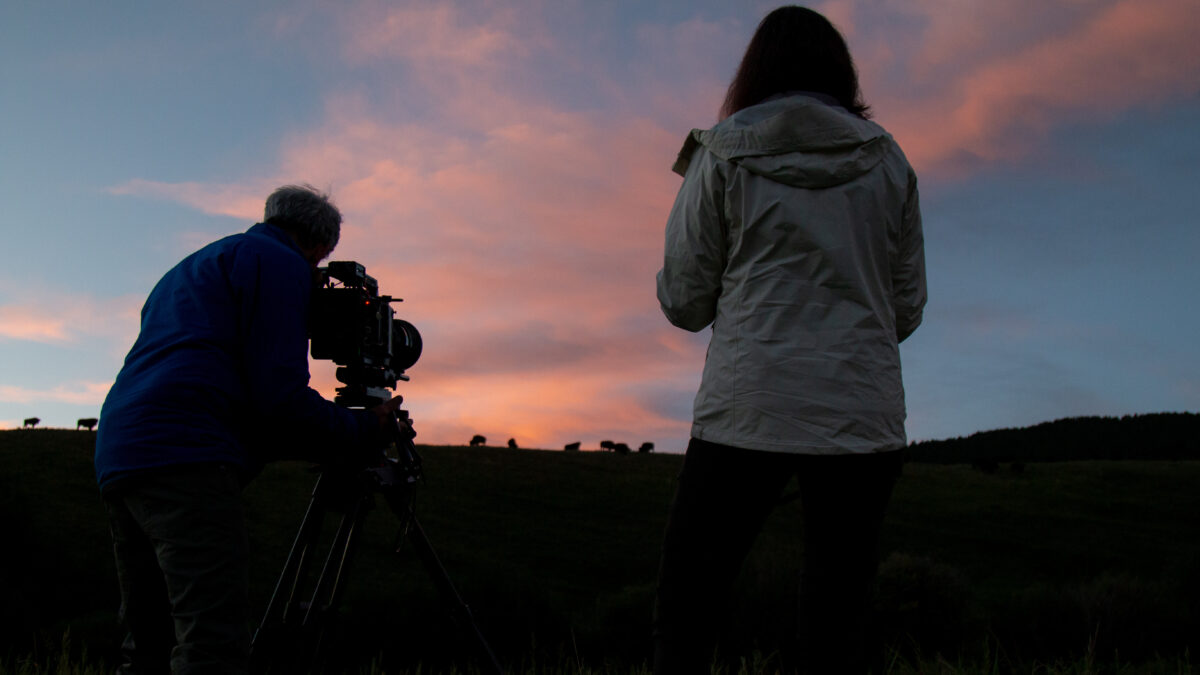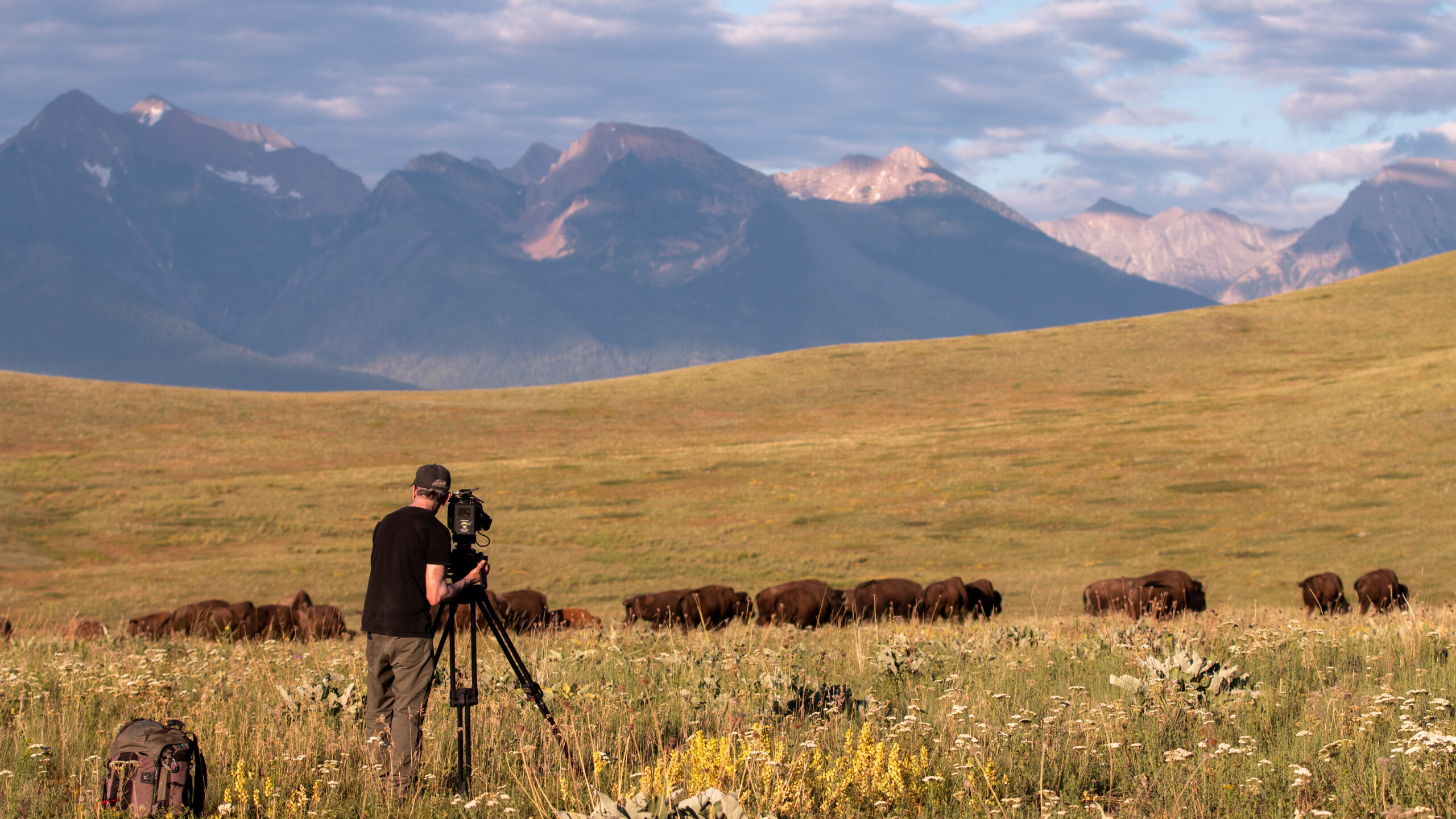For decades, bison have been appearing in the work of Ken Burns and his production company Florentine Films, largely playing a supporting role in the historical stories being told.
Bison are in Burns’ 1996 documentary series “The West,” and in his 1997 miniseries “Lewis and Clark: The Journey of the Corps of Discovery,” and again in his 2009 series “The National Parks: America’s Best Idea.” And, as his longtime collaborator, the writer and producer Dayton Duncan recently explained, they’re also tangentially in the 2012 series “The Dust Bowl,” owing to the fact that the Southern plains where buffalo grazed had evolved to rely on a type of grass with short roots that was plowed over early in the 20th century, and thus the destruction of buffalo habitat precipitated the agricultural and ecological disaster to come.
Over and over again, these iconic American animals kept turning up in the work of one of America’s most iconic documentary filmmakers. And now, finally, the time has come for Burns to tell their story.
Called “The American Buffalo,” Burns’ new two-part four-hour series premiered before a national audience on Oct. 16, on PBS. It’s a story that spans more than 10,000 years of history to show how an animal that once numbered in the millions and covered North American landscapes was brought to the edge of extinction, and ultimately saved.
“The story of the buffalo is the story of the United States’ march across the continent. The story of the buffalo is the story of Native peoples and their more than 10,000-year interrelationship with this animal, and the 600-generations (of Indigenous people), as Germaine White says in our film, and the maybe perhaps six or seven generations of Americans, who, in a blink of an eye nearly took this beast to extinction,” Burns said in a recent interview with the Beacon. “It goes into, as Dayton (Duncan) says on camera in the film, almost every corner of American history, and is an unbelievable, unspeakable tragedy. And yet, as he also says, you go farther down the trail and there’s hope. A hugely important topic. I can’t think of a more important work that we could do.”
Julie Dunfey, a producer on “The American Buffalo,” shared that the joke Burns makes sometimes is that they are making the same film over and over again. “Just looking at who we are, these strange people we call Americans, and this biography offers us a way of looking at our history yet again, but through this unique lens of an animal.”
In this case though, it’s an animal with a story that is so closely connected to the plight of Native Americans in the 19th and 20th centuries, that the filmmakers came to believe the story of one couldn’t be told without telling the story of the other. Duncan characterized the overarching story as one of “an ecological tragedy that coincided with a cultural tragedy,” At one point in the late 19th century, the population of buffalo in the United States had dropped from as many as 15 million, to fewer than a thousand. It’s a period in which Native Americans were also being forcibly relocated, and killed by the U.S. military. Simultaneous to the destruction of buffalo, western tribes were being confined to reservations, and told they couldn’t live the life they had lived, according to Duncan.

Among those interviewed for the film was Dan Flores, a longtime professor of western history at the University of Montana who retired in 2014. Flores’ assessment of the killing of the American buffalo in the late 19th century is also included in a book Burns and Duncan wrote to coincide with the documentary called “Blood Memory: The Tragic Decline and Improbable Resurrection of the American Buffalo.”
There, Flores declares that amid the rotting buffalo carcasses that came to populate western landscapes, the smell that emanated was “a sensory apprehension of the end of ten thousand years.”
“There is no story anywhere in world history that involves as large a destruction of wild animals as happened in North America, in the western United States in particular, between 1800 and 1890,” Flores says in “Blood Memory.” “It is the largest destruction of animal life discoverable in modern world history. This is one of the worst black marks, really, on the whole American historical story. It’s a world that doesn’t even last eight more decades after Lewis and Clark sees it.”

“The American Buffalo” not only depicts the industry, greed and market forces that nearly led to the complete destruction of the animal, but it also depicts historical figures, including Theodore Roosevelt, who understood it to be a way of “solving the Indian question” and believed that the slaughter of the buffalo was required for “the advance of white civilization in the West.”
Burns said that some people want to have their history sanitized, but that “if you claim you’re an exceptional nation, exceptionalism requires vigilance and dealing with the uncomfortable as well as the comfortable,” and he added that not teaching the darker moments of American history amounts to “a one way ticket to second-rate status” for the nation.
Montana and Montanans play a central part in the documentary, including more than five current or former residents who are interviewed. Much of “The American Buffalo” was filmed in Montana, and crew members traveled to locations including First Peoples Buffalo Jump State Park, the CSKT Bison Range, the Fort Belknap Reservation, Ted Turner’s Flying D Ranch, the American Prairie nature reserve, the Museum of the Great Northern Plains in Fort Benton and Yellowstone National Park.
The film incorporates the stories of people from the Kiowa, Comanche, Cheyenne, Lakota, Salish, Kootenai, Mandan-Hidatsa and Blackfeet tribes, and Dunfey, the producer, said it was a conscious decision to make Indigenous voices and perspectives central to the documentary. They sought out Native voice actors to read statements made by Native American historical figures, and also interviewed descendants of some of those same figures, as well as tribal experts.

It’s an approach that Rosalyn LaPier, an enrolled member of the Blackfeet Tribe and Metis, who is an environmental historian, ethnobotanist, and professor at the University of Illinois, said she appreciates. Now in her 50s, her perspective is informed in part by the time she spent growing up on the Blackfeet Reservation, where the only time she saw bison was after loading up on a school bus in Browning to watch the fall roundup at the Confederated Salish and Kootenai Tribe Bison Range. Though she said bison largely ceased to exist for much of the 20th century for Indigenous people in Montana, they remained a part of religious practices.
“I want to emphasize that for a lot of Indigenous people, where they viewed bison as sacred, or bison were part of their religion, or religious practices, that stayed the same,” LaPier said, adding that the resurgence of the bison in tribal communities has only served to strengthen those practices and beliefs, and provided opportunities for people to reincorporate buffalo back into their diet.
For Marcia Pablo, the story told in “The American Buffalo,” is especially personal. A key player in the story of how the bison were saved was her great-great-grandfather Michel Pablo, who was born on the Blackfeet reservation, and found himself living on the Flathead reservation as a boy. Michel Pablo partnered with Charles Allard, and in the 1880s, they purchased 13 buffalo, which would one day become a herd of 300, and the largest in the country.
Concerned over how the Allotment Act would open up his grazing land to homesteaders, Pablo tried to sell the herd to the United States, but as is recounted in “Blood Memory,” Congress would not appropriate the money. Pablo then sold his herd to the Canadian government, and in 2016 descendants of that herd were transferred to the Blackfeet Tribe. A portion of the herd was previously sold to the Conrad family in Kalispell in 1902. Those animals were bought by the American Bison Society, and released to graze on the National Bison Range in 1909, in an area of land, frustratingly to Marcia Pablo, not far from where Pablo’s herd had grazed before its sale to Canada.
Marcia Pablo grew up knowing something of Michel’s story, but she said she began researching it further decades ago when her brother Mickey Pablo told her that once he retired, he wanted to write a book about it. But he never had the chance. He died in 1999, while still serving as the CSKT tribal chairman, and his sister believes he would be proud of the new documentary.
Marcia Pablo continues to keep the family history alive, sometimes by digging up old documents, and other times by showing younger generations, including her grandkids, where these events occurred.
“The place where Michel walked is still there,” she said. “My eyes are seeing exactly what he saw. The Mission Range, and the grass, and the rivers. And I want them to have that connection, too.”
She said her great-great-grandfather was a visionary, and a principled man who could be tough, but who also had a softer side. For her, to have his story featured in “The American Buffalo” is “a dream come true.”
“It’s quite an effort,” she said of the documentary. “But finally, the story’s being told.”
For more information on how to watch and stream “The American Buffalo,” go to https://www.pbs.org/kenburns/the-american-buffalo/watch-guide
